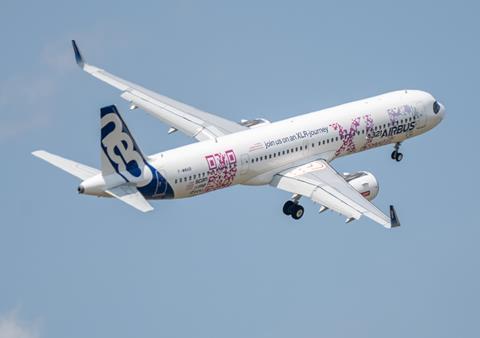Airbus is confident that the slip in the A321XLR entry-into-service date will not have a substantial effect on delivery plans.
Chief executive Guillaume Faury, speaking during a 15 February briefing, said the finalisation of certification was taking “a bit more time” than expected.
The airframer has, for several months, maintained that the long-range aircraft would enter service in the second quarter of this year.
But it admitted in its full-year financial statement that this would slip to the third quarter.
Faury says the manufacturer is in “close contact” with customers over the delivery situation.
“We’re in the final phase of completing certification and industrialisation [for the XLR],” he says, pointing out that certification requires closing documents “in their thousands”.

The initial customer XLR airframe is already in final assembly, and Faury says the shift in delivery amounts to a “slight delay”.
“For most aircraft it doesn’t change delivery dates,” he says, and stresses that he is “satisfied with the progress of the programme”.
Faury adds that the range of the aircraft – which has been pitched at up to 4,700nm – is “what it’s supposed to be” and says the “general performance overall is very strong”.
Around 550 A321XLRs are included in the broader A321neo backlog, a figure which Faury describes as “strong” given that the XLR is a “high-end product” for the single-aisle family.
He says a “handful” of XLRs will be delivered this year and, while production will accelerate, the initial rate will “not be too fast”, because the airframer wants to ensure it can address any issues in manufacturing early.
Airbus originally unveiled the A321XLR at the Paris air show in 2019, prior to the pandemic crisis, at which point it expected deliveries to begin in 2023.


























